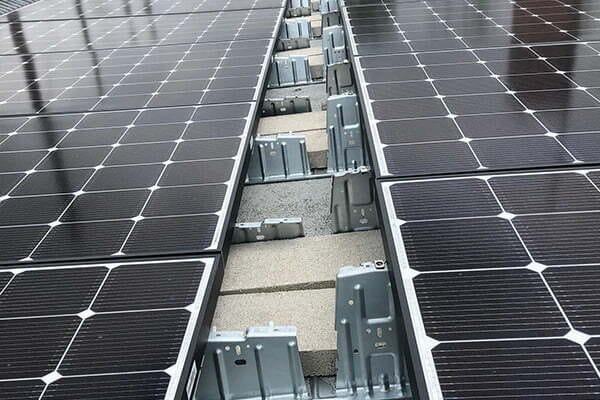Electrical Work: Electric Main Panel and Circuit Breakers
Every electrical task can cause harm. The most hazardous types of electrical work are shock and arc flashes as well as arc blasts. These are the most dangerous types of electrical work. They can cause serious burns that can be up to 19,000 degrees Celsius.
Over 2000 individuals from NSW were treated to electric shocks during the past four year. Sixteen were permanently disabled, while five perished.
Every job that requires the use of electricity could result in catastrophe. Be aware of the dangers that could befall your employees. Don’t make quick cuts. Don’t assume that the electrical system is safely operated.
What is a Circuit Breaker?
Circuit breakers are an electrical switch that protects an electrical circuit breaker against damage from short circuits, overcurrent/overload, or short circuit. The circuit breaker interrupts current flow upon the detection of faults using protective relays.
How Circuit Breakers work?
Circuit breakers are a vital safety tool in today’s society. When there is too much electricity flowing through a structure’s electrical wiring, these machines shut off power until the issue is repaired. Household electricity without circuit breakers or alternative of fuses would not be feasible because of the danger of explosions, equipment malfunctions and other problems.
We’ll be learning how circuit breakers and fuses are able to monitor electric currents and they shut off electricity when current becomes too high in this article. We’ll see that the circuit breakers are a very simple solution to a potentially dangerous problem.
Understanding how the electricity in your home functions is crucial to understand circuit breakers.
Three primary attributes defines electricity:
- Voltage
- Current
- Resistance
Voltage refers the “pressure” which makes the electric charge move. Current is a measure of the charge’s “flow”, the rate at which it moves through the conductor. Conductors provide some resistance to this flow. This resistance varies depending upon the conductor’s dimensions and the composition.
All three are interconnected. It is impossible to alter one without altering the others. A voltage that is divided by the resistance is called current. It’s often referred to as I = (v/r). This makes sense intuitively: Increase the pressure acting on the electric charge or reduce the resistance to allow more charged to move. Charge flow will decrease if you increase resistance or reduce pressure.
The Working Principle of the Circuit Breaker
Circuit breaker basically consists of fixed and mobile contacts. In normal circumstances, the contacts are touching each other and carrying current. The electrical circuit breaker closes and the current-carrying contacts (also known as electrodes) connect with one another under the pressure of the spring.
In normal operating conditions in normal operating conditions, the arms can be closed or opened to enable switching and maintenance. A trigger is all that’s required to activate the circuit breaker.
If there is a fault in any system part the trip coil is energized. The contacts that move are then separated due to a mechanism.
Different types of Circuit Breakers
Voltages for circuit breakers could be used to categorize them into. Circuit breakers with low voltage are those with a voltage below 1000V. Circuit breakers that exceed 1000V on the other hand, are known as middle voltage breakers.
The arc extinction medium of the circuit breaker could be used to best classify it. The following are examples of circuit panel breaker panels:
- Vacuum Circuit Breaker
- Minimum Circuit Breaker
- Air Break Circuit Breaker
- Sulfur Hexafluoride Circuit Breaker
- Air Blast Circuit Breaker
- Oil Circuit Breaker
- Minimum Oil Circuit Breaker
- Bulk oil circuit breakers
High-voltage molded case circuit breaker panels can be classified into two categories that are oil circuit breaker as well as oil-less breakers.
Circuit breakers vs fuses
Common OCPDs include fuses and an electrical circuit breaker. Although circuit breakers and fuse serve the same purpose, there are key differences to be considered when selecting the right equipment or personnel protection.
Fuses
- Should be replaced if it interrupts an ongoing activity.
- Has less initial cost
- There is no maintenance required.
- Only for current events.
- Optional protective features are not offered
Circuit breakers
- It is possible to reset the clock in the event of an interruption to an overcurrent event
- The product comes with a higher price at first
- Maintenance is needed
- Optional protective features (e.g. Optional protective features)
- Circuit breaker components
Every application needs a distinct moderate voltage circuit breaker. The various types, however, share five components.
Five universal circuit breakers components
The five most fundamental circuit breakers components are listed below.
- Frame – Protects circuit breaker panels from external material
- Mechanism of operation – Provides for the open and close of circuit breakers
- Contacts – Allows flow of current through the circuit when it is closed.
- Arc extinguisher: When the circuit is interrupted, an arc is extinguished.
- Trip unit - Opens the operation mechanism in the case of a prolonged overload short circuit, or any other emergency.
Electric Main Panel
There are numerous options to the size and configuration of main panels. The panel can be mounted outside the house either separately or together with electric meters or within the wall.
A modern main panel receives the three electrical service cables and connects them to smaller wires and cables that connect to subpanels and circuits throughout your home.
2 meter mounts represent the points where power lines connect. The main circuit breaker draws electricity from the two lower plugs when the meter has been installed in order to make the entire circuit. The main breakers transmit electricity to two bus bars that in turn transmit it to the secondary circuit breakers.
Security is the most important factor. A conductor, commonly made of solid copper, must extend from the neutral connector within the panel to the ground for all circuits. This could be a pipe that is used for drinking water, or a steel rod that is driven directly into ground. The neutral bus bar isn’t protected by an overcurrent protection device, which means it can always maintain zero voltage.
Subpanels and Branch Circuits
Secondary panel are linked to larger circuit breakers through the connection of subpanels. Subpanels can come with their own circuit breakers or power specific appliances. Subpanels can be found in various areas of your home. One subpanel may be located near the air conditioner in the home.
Branch circuits are circuits that supply electricity to different areas of the home. Branch circuits may originate from a distributor panel for service that is either an main panel (or subpanels).
Outdoor Circuits
Protect your patio, bathroom and kitchen electrical outlets with a specific ground-fault Circuit Interrupter (GFCI) circuit breaker to prevent electrocution. This circuit breaker is more sensitive to any short than normal breakers and could require more frequent resets.
Installing GFCI receptacles could help safeguard individuals from electrical circuits within their homes that only power a few outdoor outlets.
How to Ground a Electrical Main Panel
Our day-to-day lives are so dependent on electricity that we rarely think about the power source. The ‘Internet of Things’ has made electricity more important. The power of electricity can cause more damage to a home than it did just a few years before.
But, there is an irony in the fact the way we live our lives is being governed by electricity. We are also losing the skills needed for basic maintenance in order to ensure our homes are safe. The main electrical panel must be grounded. is vital for ensuring your home’s safety and to ensure that the electrical power supply is functioning as it is supposed to.
This task is best left to an electrician with a license who is part of the LA Solar Group.
How does an Electric Panel Work?
Circuit breakers activate when the circuit is overloaded. They are safety devices to safeguard electrical devices from harm. If the breaker did not switch off the power, overload circuits could cause serious injury or even cause electrocution to people.
Each circuit is controlled individually by a breaker. The circuits typically correspond to one room or an entire part of the house. Electric ranges or air conditioners can have their own circuit breaker.
A breaker is designed for an electrical load that is specific to. It shuts down if it isn’t able to handle the increase in demand. This is usually the case if it is too much devices being connected to a single circuit.
There are a variety of sizes for breakers, according to how much power they require. Breakers are divided according to the amount of amperage it can handle, much as the electric service at home. Breakers are able to handle anything from 15 to 200 amps. But, the majority of breakers are just 15, 20 or 30, amps.
Voltage ratings can also be assigned to breaker circuits. A single circuit breaker usually offers 120 voltage. This is enough for most lighting requirements like TVs and lighting. Double circuit breakers are rated for up to 240 Volt. This is suitable for large appliances like a cooker or dryer that require lots of power. This is for large appliances that require power like refrigerators and stoves. Each appliance should have its own designated circuit breaker.
It is possible to flip the switch to shut it off if the breaker is triggered. If the fuse blows, it can’t be reset in older homes with fuse boxes.
Electric Main Panel Installation Cost
What’s the price for an electrical panel to be replaced or updated?
The cost of replacing the electrical panel in your home can vary based on how extensive the work is, but the cost should be anywhere from $2,000 to $2,500. But, this is only for service that is 100 amps. It is feasible for homeowners to upgrade their service to 200. It is estimated to cost between $3500 and $5,000.
Three electricians of the LA Solar Group can give you precise quotes to help you figure out the price.
The two main reasons for upgrading your electric panel include: you don’t have enough power or your fuses are too long.
Upgrade if you have a fuse box , or your electrical service has lower than 100 amps. You might need to upgrade to 200-amp or even 400-amp service, even if you are using 100-amp service. Many homes are still running with 100-amp service.
It is possible to ask the electrician from LA Solar Group to estimate the electrical panel and tell you if it is sufficient.
Are permits required to upgrade an electrical panel?
Yes. To make any changes to the electrical panels, you will need a permit.
You can hire an electrician from us to handle the majority of electrical panel repairs. LA Solar Group will usually be the one to handle the permit. If you’re undertaking major work, such as upgrading the panel or replacing it, an electrician may be required to get the permit.
The local municipalities decide on the guidelines for permits. For more information on how electrical permits are handled in your region, check out the website of the municipality you live in.




